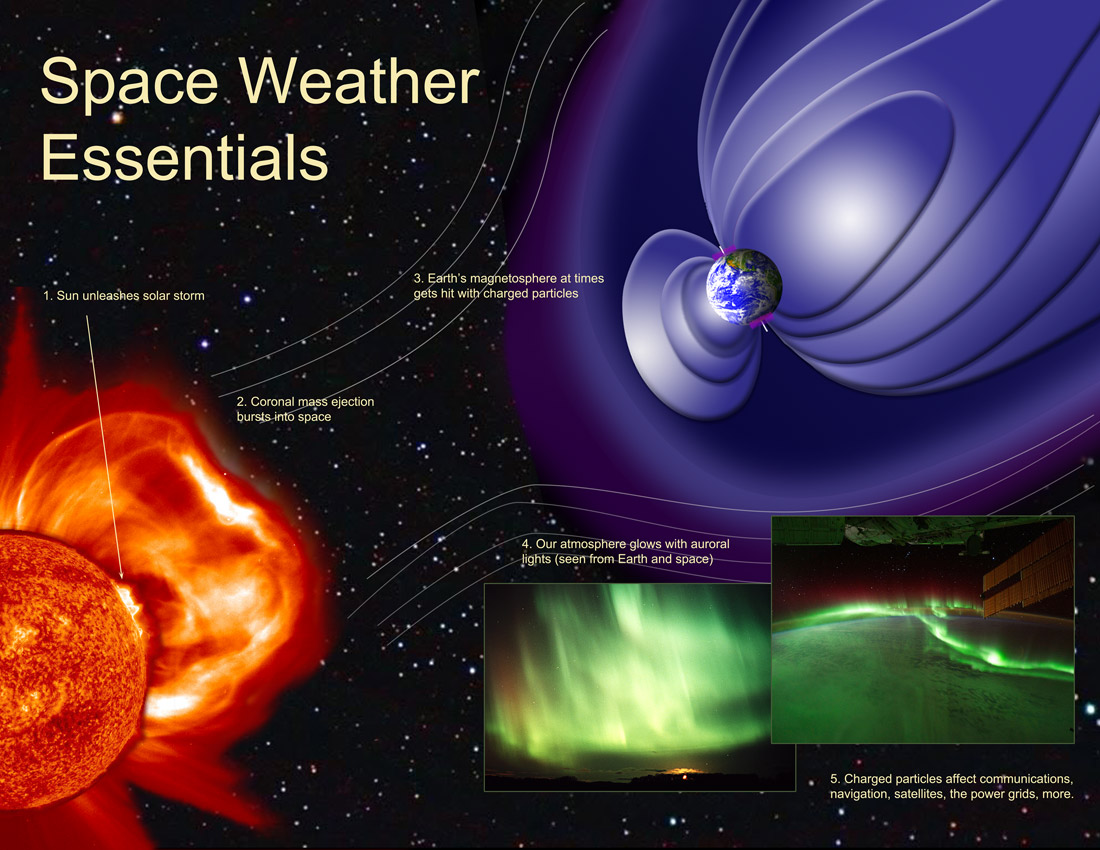
Space is, famously, a pretty empty place. So, how is it possible to have weather there?
In March 2016, Britons enjoyed a rare treat: a display of the aurora borealis, better known as the Northern Lights, which could be seen as far south as Oxfordshire. Seekers after the Lights usually have to travel farther north to places like Scandinavia and Iceland to stand a good chance of seeing them.
These Lights are of interest to scientists as well as skywatchers, for they do not originate on Earth at all. They are caused by the interaction of the Earth’s magnetic field with charged particles streaming from the sun, and are the most famous example of what is known as “space weather”. That may seem a contradiction in terms: space is, famously, a pretty empty place. So, how is it possible to have weather there?
 Space Weather
Space Weather
The reason is that space, particularly in the vicinity of stars and planets, is empty only by comparison with planetary surfaces…
- It has wind, in the form of the zillions of charged particles streaming from the sun.
- It has storms, in the shape of solar flares, enormous eruptions of plasma that spew charged particles out into space, and coronal mass ejections, which blast a quantity of the sun’s mass out into the solar system.
- Stretch the metaphor a little, and space even possesses something a little like precipitation, in the form of clouds of dust and rock that we see from Earth as meteor showers.
 Its Effects
Its Effects
In Space

Astronauts aboard the International Space Station have special rooms in which to shelter from the high radiation levels caused by flares.
For almost all of history, space weather was a mysterious, occasionally pretty irrelevance. But as mankind has become a space-faring species, scientists and engineers have had to take its effects more seriously. Solar flares can damage satellites and spacecraft, as happened to Nozomi , a Japanese Mars probe which was short-circuited by a solar flare in 2002. Astronauts aboard the International Space Station have special rooms in which to shelter from the high radiation levels caused by flares . But the effects are not always bad: in 2005, a particularly big solar flare actually caused radiation levels in the Earth’s orbit to drop, as the magnetic fields generated by the cloud of ionised gas helped to deflect damaging cosmic rays from outside the solar system.
On Earth

Trans-polar flights can be diverted southwards if a big solar flare hits
Space weather can also have effects on the ground. The charged particles that cause the aurora emit radiation too. That is not a concern on the ground, where the thickness of the atmosphere offers adequate protection. But it is a worry at the sorts of altitudes at which modern airliners cruise. Trans-polar flights (such as those from Europe to America) can be diverted southwards if a big solar flare hits.

it can interfere with radio transmissions and the signals broadcast by GPS satellites
The sun’s tantrums can also disrupt the ionosphere, a charged layer in the atmosphere that can interfere with radio transmissions and the signals broadcast by GPS satellites. In 1989 a geomagnetic storm (a disturbance in the Earth’s magnetic field caused by a coronal mass ejection) induced big electrical currents in Quebec’s electricity grid, cutting power to millions of people for 9 hours.
Space weather is less likely to disrupt your life than the terrestrial sort, but it is possible.





